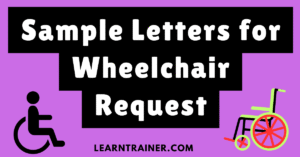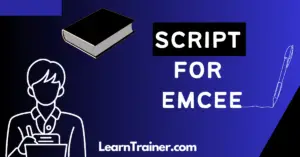Have you ever been in a room full of people, listening to someone speak, and felt completely captivated by their words? You’ve probably experienced a moment where you were moved, inspired, or convinced to take action, all because of a powerful speech.
Public speaking isn’t just about delivering information – it’s about connecting with your audience on an emotional level, sparking thought, and igniting change.
Whether you’re preparing for a conference, a classroom presentation, or a casual event, learning how to deliver a compelling speech can make all the difference. But how do you find the right words to say? What makes a speech memorable and impactful?
In this blog post, we’ll dive into the art of public speaking by exploring 8 speech examples for different occasions. We’ll break down their structure, discuss tips and tricks for delivering each one effectively, and provide you with actionable insights to help elevate your public speaking skills.
1. The Motivational Speech: Inspiring Others to Act
Example Speech: “The Journey of Self-Improvement”
Motivational speeches are one of the most popular types of speeches, often delivered in conferences, workshops, and seminars. The aim of a motivational speech is to encourage your audience to take action, improve themselves, or make positive changes. A great motivational speech should be heartfelt, authentic, and relatable.
Breakdown of the Speech Structure:
- Hook: Start with a powerful personal story or a thought-provoking question.
- Message: Share the key lesson or insight you want your audience to take away.
- Action: End with a call to action, encouraging your audience to take the next step in their journey.
Step-by-Step Example:
- Opening: “Three years ago, I stood at a crossroads. I was tired, burnt out, and unsure of where my life was headed. I had two choices: stay where I was or push myself to change. And I chose change.”
- Message: “The first step in any transformation is realizing that change starts with you. You are the architect of your destiny.”
- Action: “If you’re stuck, take that first step today. Start small. Find one thing you can improve and build from there.”
Common Mistakes to Avoid:
- Being too vague: Motivational speeches need to be specific and personal. Avoid generic advice that could apply to anyone.
- Overloading the audience with information: Focus on one key message rather than trying to deliver too much.
- Lacking passion: If you’re not passionate about what you’re saying, the audience won’t be either.
2. The Persuasive Speech: Convincing Your Audience to Take Action
Example Speech: “Why We Need to Protect Our Environment”
A persuasive speech aims to convince the audience to adopt a particular viewpoint or take action. This could range from encouraging them to vote, support a cause, or change their behavior.
Breakdown of the Speech Structure:
- Introduction: State your position clearly and make the issue relatable.
- Supporting Arguments: Provide evidence and statistics to back up your claims.
- Counterarguments: Address opposing views and refute them.
- Call to Action: Urge the audience to act immediately.
Step-by-Step Example:
- Opening: “Every year, millions of tons of plastic waste end up in our oceans. But what does that mean for us?”
- Supporting Arguments: “According to the UN, over 800 species are affected by plastic pollution, and that includes animals we rely on for food.”
- Counterarguments: “Some argue that recycling efforts are enough, but the truth is, our current systems are failing.”
- Action: “We need stricter regulations on plastic production and more sustainable alternatives. Join me in supporting local initiatives for environmental protection.”
Common Mistakes to Avoid:
- Using too many emotional appeals: While emotion can be powerful, don’t forget to back up your claims with facts and evidence.
- Being overly aggressive: Persuasive speeches should encourage thoughtful reflection, not alienate the audience.
3. The Informative Speech: Sharing Knowledge with Clarity
Example Speech: “The History and Impact of the Internet”
An informative speech aims to educate your audience on a specific topic. These speeches are often delivered in educational settings or conferences. The goal is to present facts in a clear, organized manner.
Breakdown of the Speech Structure:
- Introduction: Define the topic and why it’s important.
- Body: Break the topic down into key points or sections.
- Conclusion: Summarize the key takeaways.
Step-by-Step Example:
- Opening: “The internet, a tool many of us use every day, has a history that dates back to the 1960s. But how did it evolve into the global network we use today?”
- Body: “The first version of the internet, ARPANET, was developed by the US Department of Defense. Over the years, it grew from a simple communication tool to a platform that connects billions of people worldwide.”
- Conclusion: “The internet has revolutionized our world, changing everything from communication to commerce, and will continue to shape the future.”
Common Mistakes to Avoid:
- Overloading the audience with data: Don’t bombard your audience with too much information. Stick to the essentials.
- Lacking structure: Ensure your speech follows a logical progression.
4. The Demonstrative Speech: Teaching How to Do Something
Example Speech: “How to Make the Perfect Cup of Coffee”
A demonstrative speech teaches the audience how to do something. It’s ideal for hands-on events, workshops, or when you want to show how something works step-by-step.
Breakdown of the Speech Structure:
- Introduction: Introduce the process and why it’s valuable.
- Step-by-Step Guide: Demonstrate each step clearly, using visual aids if needed.
- Conclusion: Recap the steps and encourage practice.
Step-by-Step Example:
- Opening: “Making the perfect cup of coffee isn’t about the machine you use; it’s about the technique. Today, I’m going to show you how to brew a cup of coffee that will elevate your mornings.”
- Steps:
- “Start with freshly ground coffee beans.”
- “Measure your water carefully.”
- “Brew the coffee at the right temperature.”
- Conclusion: “With these steps, you’ll be able to make coffee like a pro. Now, go ahead and try it yourself!”
Common Mistakes to Avoid:
- Skipping steps: Don’t assume the audience knows the process. Walk them through every detail.
- Lack of visual aids: Demonstrative speeches benefit from showing rather than just telling. Use props or visual aids to make your point clear.
5. The Commemorative Speech: Honoring People or Events
Example Speech: “Celebrating the Life of a Great Leader”
A commemorative speech is designed to pay tribute to someone or something. These speeches are often delivered at memorials, award ceremonies, or special events.
Breakdown of the Speech Structure:
- Introduction: Introduce the individual or event you’re honoring.
- Body: Share stories, achievements, and what makes the person or event special.
- Conclusion: End with a heartfelt tribute.
Step-by-Step Example:
- Opening: “Today, we gather to honor the life and legacy of Dr. Martin Luther King Jr., a man whose vision changed the course of history.”
- Body: “Dr. King was more than just a leader; he was a symbol of hope and justice for millions of people.”
- Conclusion: “Let us remember Dr. King’s words and continue to fight for equality, just as he did.”
Common Mistakes to Avoid:
- Being too formal: Commemorative speeches should feel personal and heartfelt, not robotic.
- Focusing only on achievements: Share the person’s human side, not just their accomplishments.
6. The Acceptance Speech: Acknowledging an Award or Honor
Example Speech: “Accepting the Excellence in Innovation Award”
Acceptance speeches are typically short but meaningful, often delivered after receiving an award. The purpose is to show gratitude and acknowledge those who helped you achieve success.
Breakdown of the Speech Structure:
- Introduction: Thank the organization or individuals presenting the award.
- Body: Acknowledge those who helped you achieve the award.
- Conclusion: End with gratitude and a forward-looking statement.
Step-by-Step Example:
- Opening: “Thank you so much for this honor. I am truly humbled to receive the Excellence in Innovation Award.”
- Body: “I’d like to thank my team, my mentors, and my family for their unwavering support throughout this journey.”
- Conclusion: “This award is just the beginning. I look forward to continuing our work in making a difference.”
Common Mistakes to Avoid:
- Forgetting to thank others: Always acknowledge the people who helped you along the way.
- Overloading the speech with personal details: Keep it focused on the award and the people involved.
7. The Farewell Speech: Saying Goodbye with Grace
Example Speech: “Leaving My Job After Ten Wonderful Years”
Farewell speeches are delivered when leaving a job, community, or even life chapter. The key here is to express gratitude and leave on a positive note.
Breakdown of the Speech Structure:
- Introduction: Express gratitude for the time spent.
- Body: Share memorable moments and what you’ve learned.
- Conclusion: End on a hopeful and positive note.
Step-by-Step Example:
- Opening: “After ten years with this incredible team, it’s time for me to say goodbye.”
- Body: “I’ve learned so much from each of you, and I’ll carry these lessons with me.”
- Conclusion: “Though I’m moving on, I hope our paths will cross again. Thank you for everything.”
Common Mistakes to Avoid:
- Being too negative: Even if you’re leaving due to a negative experience, focus on the positives.
- Over-emotional delivery: Keep the tone hopeful and uplifting, even if it’s a difficult goodbye.
8. The Keynote Speech: Setting the Tone for an Event
Example Speech: “The Future of Technology in Education”
Keynote speeches are often the most anticipated at conferences and events. They set the tone for the entire day and provide a broad overview of the event’s theme.
Breakdown of the Speech Structure:
- Introduction: Introduce the topic and its importance.
- Body: Present the main points you’ll cover in the event.
- Conclusion: Inspire the audience to engage with the upcoming sessions.
Step-by-Step Example:
- Opening: “The world of education is undergoing a massive transformation, driven by technology.”
- Body: “Today, we’ll explore how artificial intelligence, virtual classrooms, and digital learning tools are reshaping education.”
- Conclusion: “I encourage you to think about how you can contribute to this revolution in education.”
Common Mistakes to Avoid:
- Not aligning with the event theme: Make sure your speech ties in with the overall theme of the event.
- Being too vague: A keynote speech should be inspiring and specific, not too broad.
Conclusion: Perfect Your Speech, Perfect Your Impact
In public speaking, there’s no one-size-fits-all approach. Each speech, whether motivational, persuasive, or informative, requires a unique style and delivery method.
By practicing the speeches above and incorporating the tips I’ve shared, you can enhance your public speaking skills and truly make an impact.
If you have a speech coming up, take some time to refine your approach. And remember, the most important part of speaking is connecting with your audience – so practice, prepare, and speak from the heart.
Key Takeaways:
- Different types of speeches require different approaches.
- Personal stories and examples help connect with the audience.
- Clear structure and a strong conclusion make your message memorable.
Now, it’s time to step up and give your best speech ever. Are you ready to take on the challenge?
FAQs:
Q: How do I overcome stage fright before a speech?
A: Start by practicing your speech in front of a mirror or with friends. Deep breathing and positive visualization can also help calm your nerves.
Q: How can I improve my speech delivery?
A: Practice, record yourself, and seek feedback from others. Pay attention to your tone, pacing, and body language.
Q: What should I do if I forget my lines during a speech?
A: Stay calm. If you forget a line, try to summarize the point or move on to the next section. The audience is generally forgiving, and they won’t notice small slip-ups.


